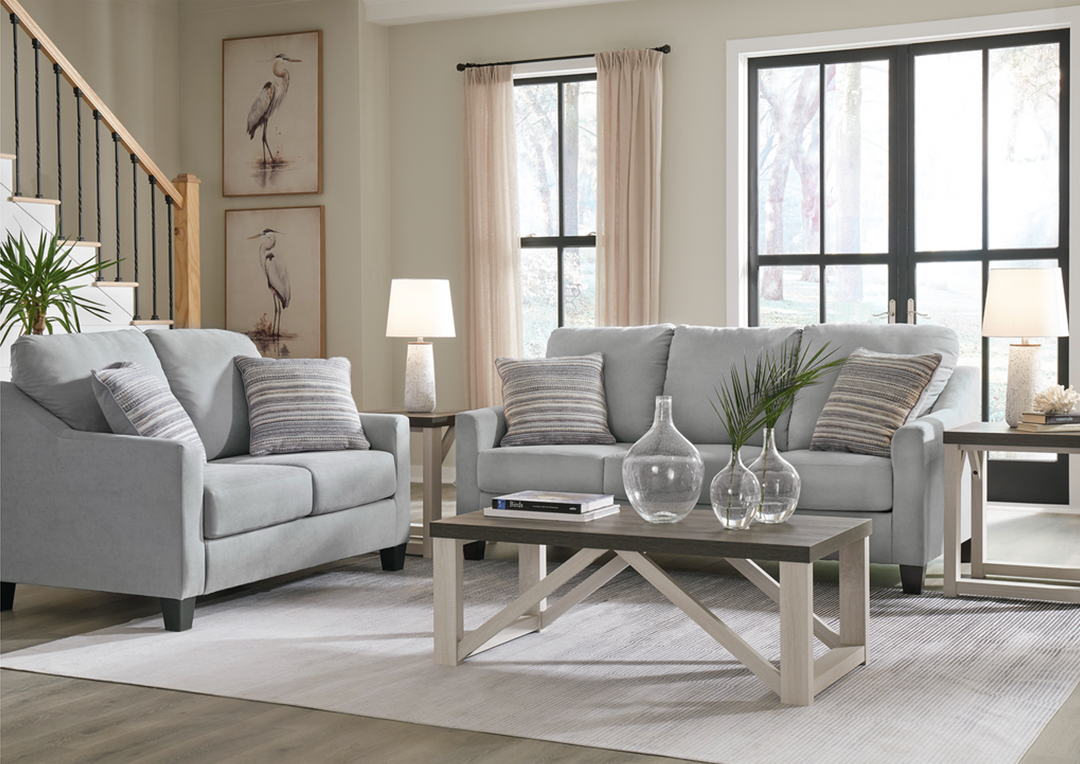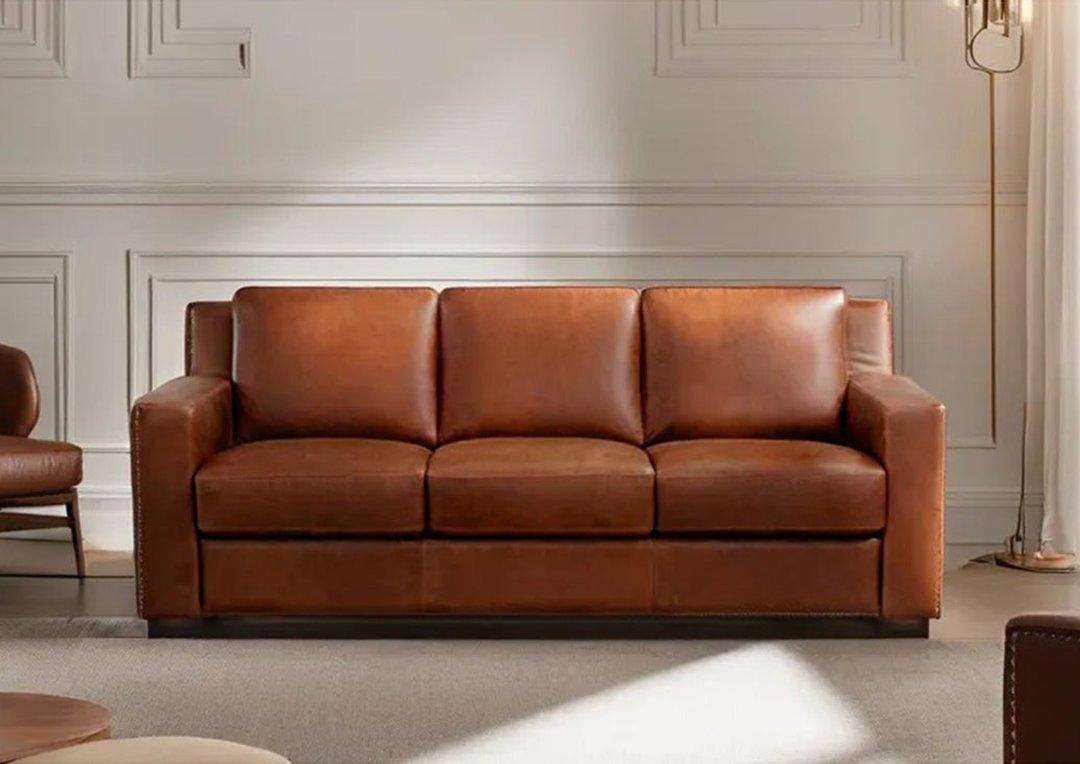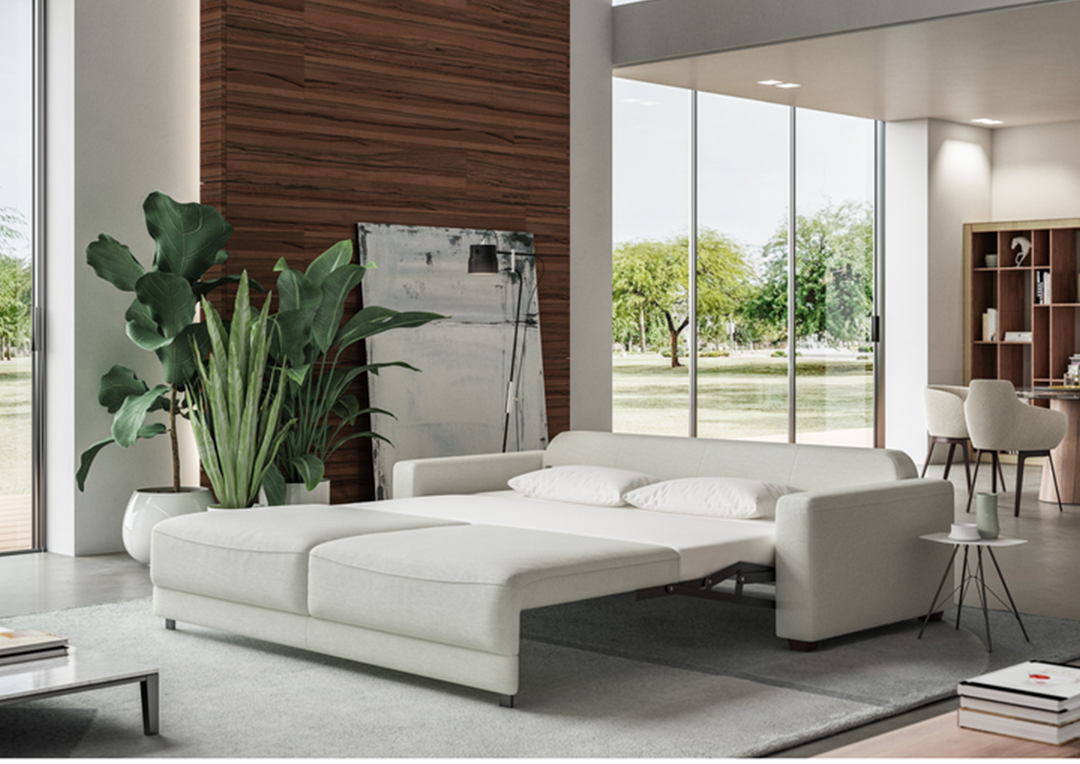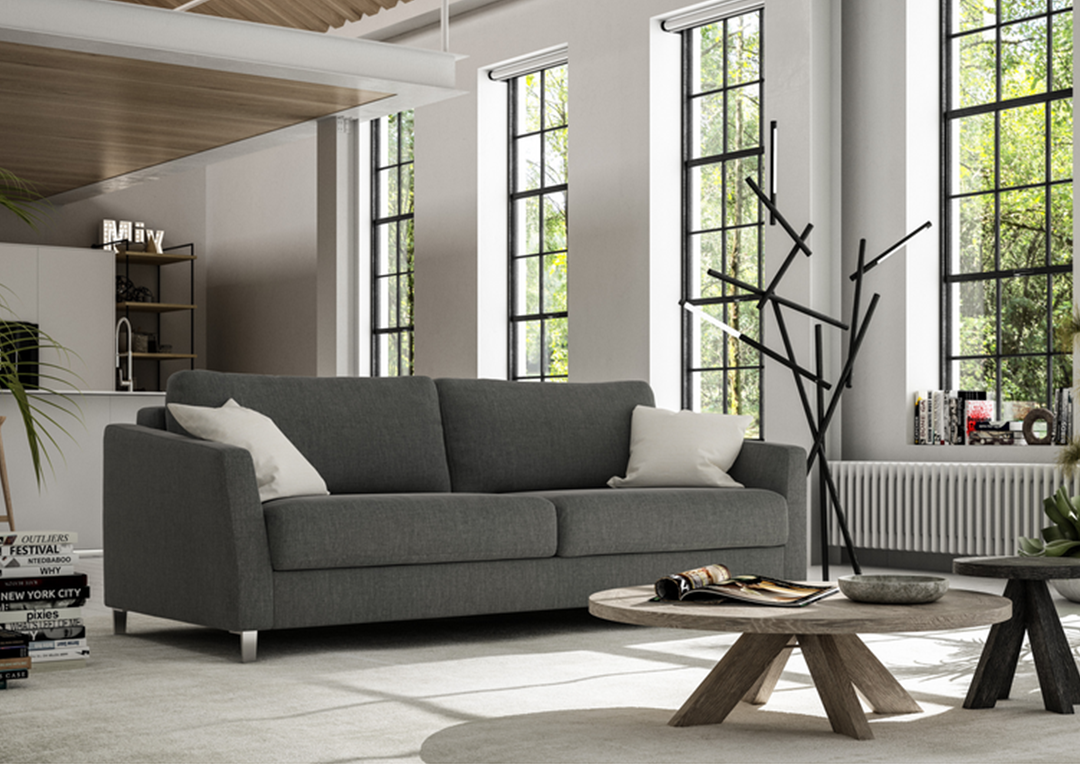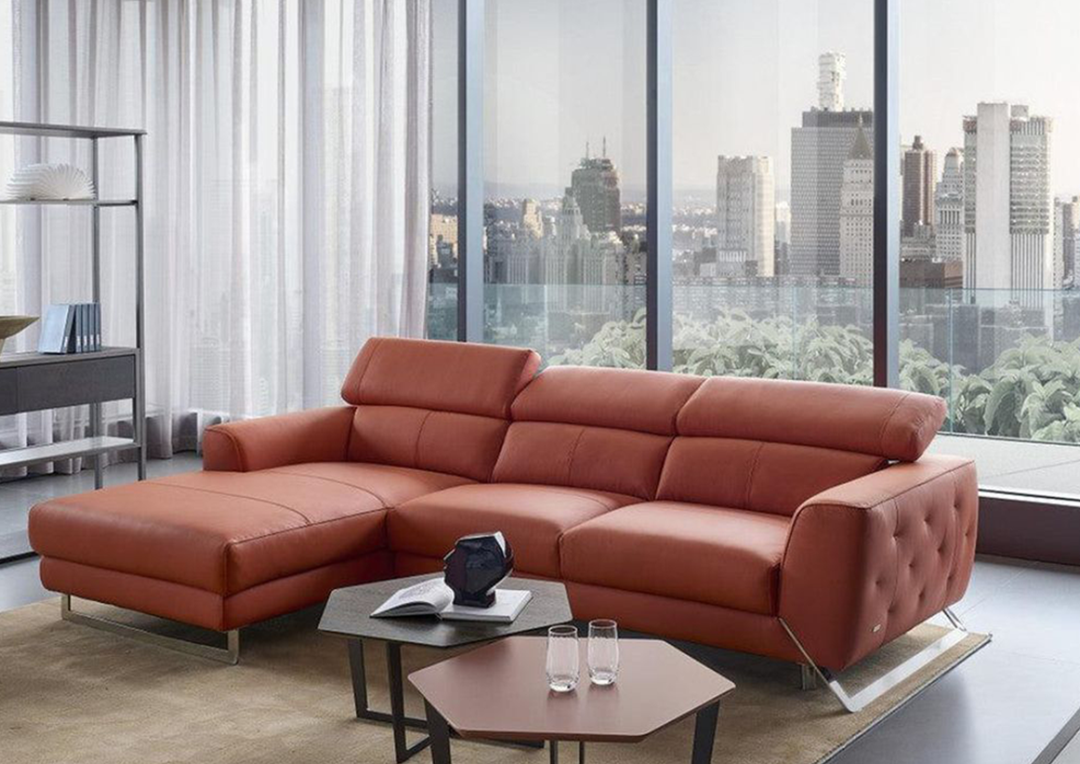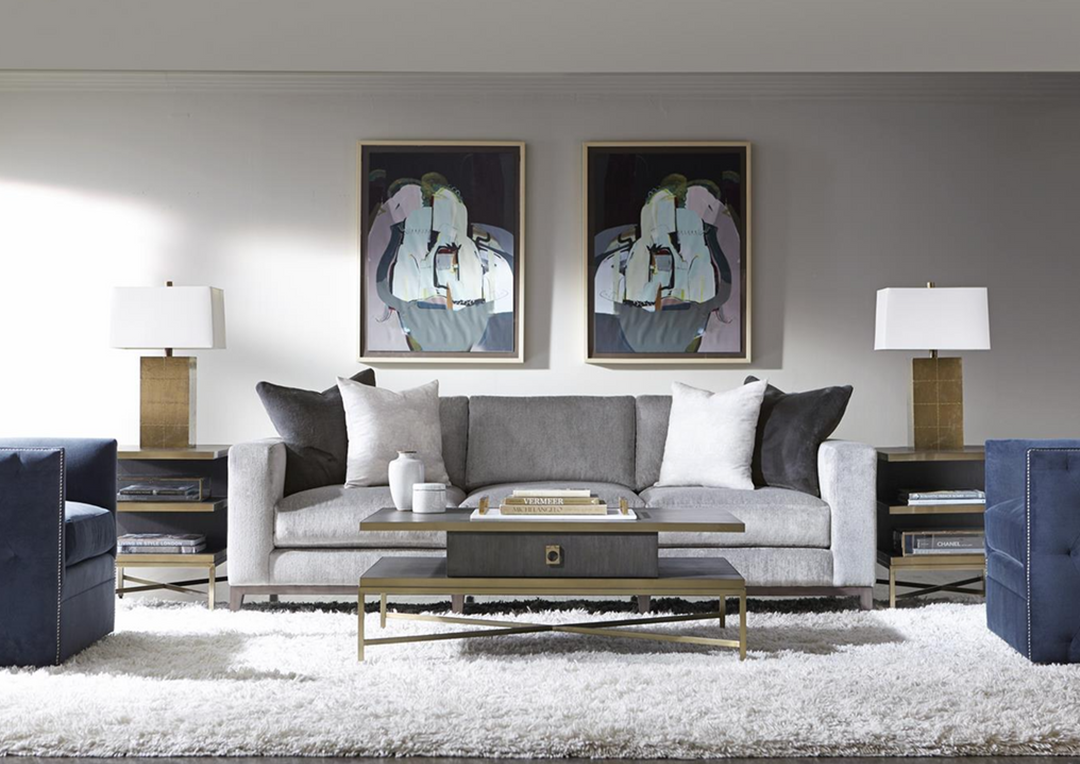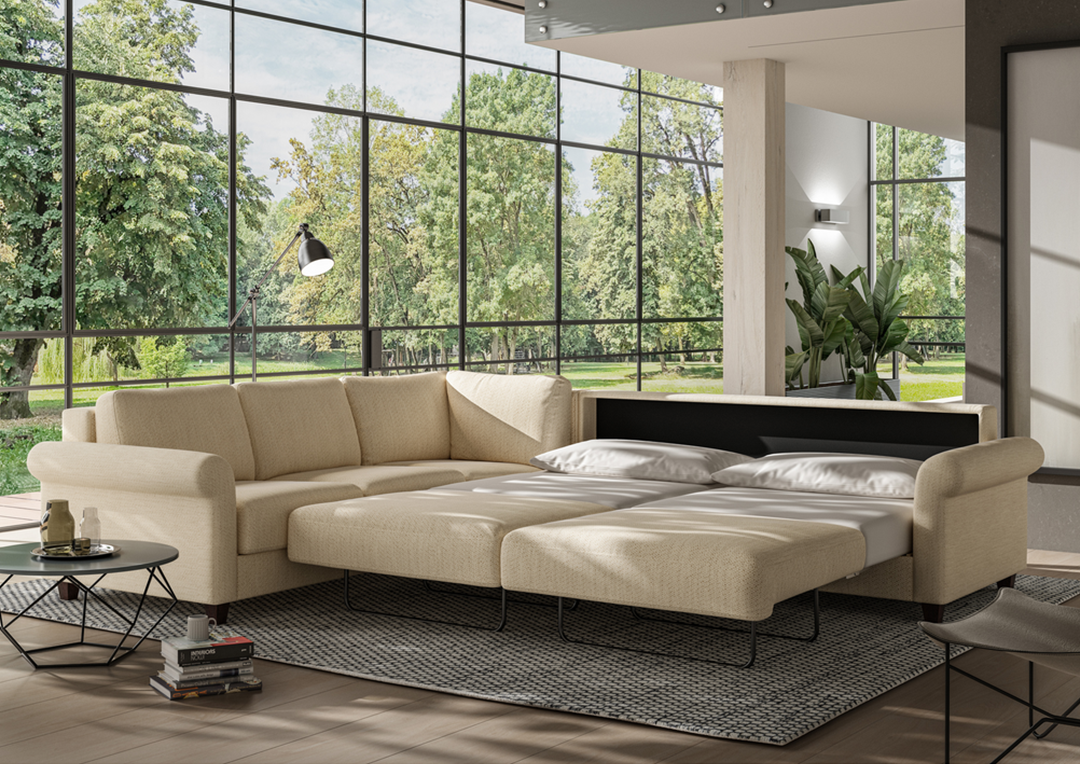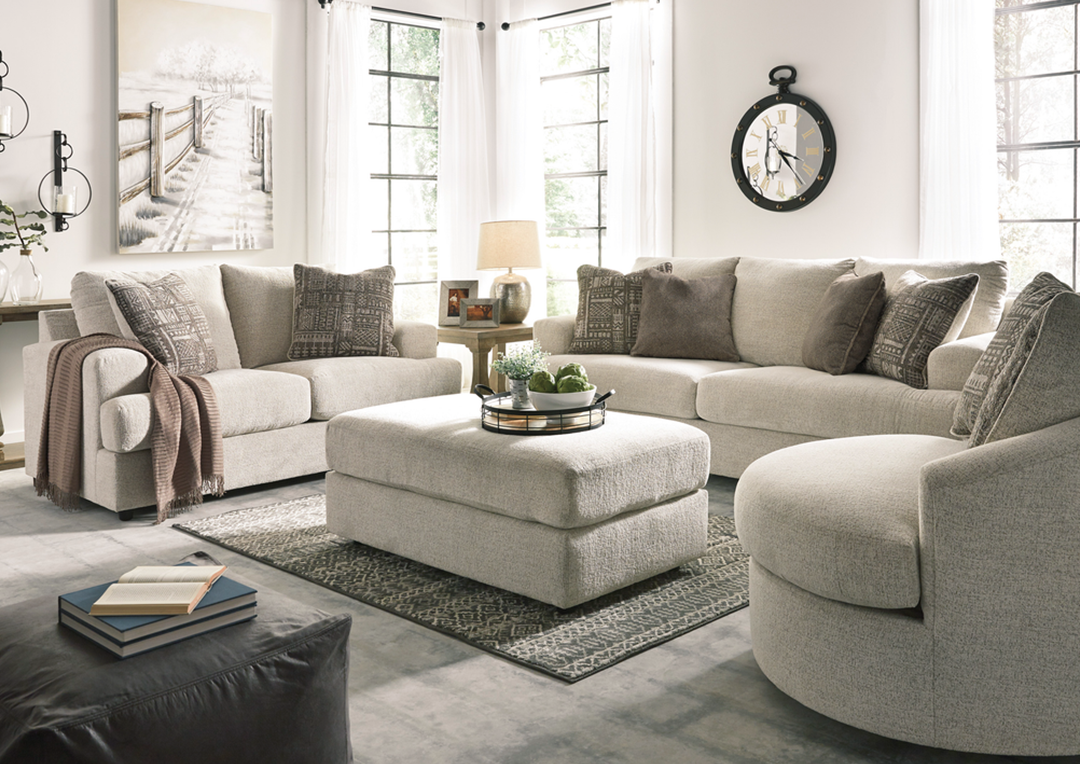How to Arrange Your Sectional Sofa for Maximum Lounging

TABLE OF CONTENTS
- What Does “Maximum Lounging” Mean?
- Step 1: Know the Type of Sectional You Have
- Step 2: Measure Your Space First
- Step 3: Specify Your Primary Lounging Goal
- Step 4: Floating vs. Against-the-Wall Placement
- Step 5: Decorate With Function in Mind
- Step 6: Keep the Flow Natural
- Step 7: Don’t Forget the Back View
- Examples of Smart Sectional Arrangements
- Wrap Up
A sectional sofa is an excellent option for living rooms. It’s where you wind down after work, binge your favorite shows, read, scroll endlessly, or nap on a lazy day. But owning a sectional doesn't guarantee comfort. How you place it does.
At Sofabed.com, we believe lounging is a lifestyle. In this guide, we’ll show you how to arrange your sectional to get the most comfort, function, and relaxation out of your space.
What Does “Maximum Lounging” Mean?
Before we move the furniture, we need to define what we’re aiming for. Maximum lounging means:
- Your sectional feels natural in the space.
- You can stretch your legs without hitting walls or coffee tables.
- Every seat offers a good view of the TV, a window, or even each other.
- There's room for snacks, chargers, books, and pets.
- You don’t need to shift the furniture every time guests arrive.
With that in mind, let’s look at how to make your sectional work hard so you can relax harder.
Step 1: Know the Type of Sectional You Have

Sectionals come in many configurations. Each shape works differently in a room. Here’s a breakdown:
|
Sectional Type |
Description |
Suitable For |
|
L-Shaped |
One long side + one shorter side |
Corners, small-to-medium rooms |
|
U-Shaped |
Two short sides + one long middle section |
Large rooms, family spaces |
|
Curved |
Arched seating, no hard angles |
Open floor plans, social setups |
|
Modular |
Pieces you can rearrange freely |
Flexible layouts, renters |
|
Sleeper Sectional |
Built-in pull-out bed |
Guests, compact apartments |
|
Recliner Sectional |
Seats with built-in reclining mechanisms (manual or power-operated) |
Home theaters, ultimate lounging spots |
Ask Yourself:
- Does your sectional have a chaise?
- Is it reversible or fixed?
- Do the backs recline?
Comprehending your sofa’s structure will help you decide where and how to place it.
Step 2: Measure Your Space First

Don’t guess the size. Please measure your space. The biggest mistake people make is underestimating the footprint of a sectional.
Key Measurements You Need:
- Room width and length
- Distance between walls and windows/doors
- Height of windowsills (important if the sofa will sit in front of one)
- Walking paths: leave at least 30 inches for clear movement
- TV distance (around 7 to 9 feet for optimal viewing)
Use masking tape or furniture apps to outline the sofa on your floor before lifting anything.
Step 3: Specify Your Primary Lounging Goal

This step is usually skipped by most people, but it changes everything.
Ask yourself, what’s my lounging style? Choose one that fits your lifestyle:
- TV-centered: The screen is the focal point.
- Conversation-friendly: People face each other comfortably.
- Nap and sprawl: You want space to lie down fully.
- Multi-purpose: Reading, working, relaxing, all in one place.
Each goal requires a slightly different setup. Let’s explore them.
Arrangement Ideas Based on Lounging Needs
1. TV-Centered Layout
If the television is your main source of relaxation, your sectional should frame it without blocking views.
Tips:
- Place the longer side of the sectional facing the TV.
- Avoid putting seats directly in front of a window to reduce glare.
- Add a media console across from the longest stretch.
- Leave 2–3 feet behind the sofa for walkways.
Optional Add-ons:
- Swivel chairs on the sides for extra viewers.
- A low-profile ottoman for foot support without blocking the screen.
2. Conversation-Friendly Setup
It's ideal for homes that host guests frequently or for families who gather to talk rather than watch.
Tips:
- Choose a U-shaped or semi-circular setup.
- The seating should wrap around a central point, like a coffee table.
- Ensure no seat faces the back of another.
- Use rugs to define the gathering area.
Make It Better:
- Add side tables between seats.
- Keep the center open for serving trays or board games.
3. Nap + Sprawl Zone
Sometimes, you want to claim the whole sofa. We get it.
Tips:
- Use sectionals with a chaise or extended length.
- Float the sofa in the room so you can access it from both sides.
- Keep the area in front of the chaise clear for leg space.
Best Additions:
- A soft ottoman instead of a coffee table.
- A throw blanket within arm’s reach.
- A lamp nearby for nighttime reading.
4. Multi-Purpose Space
This is common in smaller homes or open floor plans. You lounge, read, work, and nap in the same spot.
Tips:
- Use a reclining sectional or a modular sectional that you can reconfigure.
- Divide the room with the sofa’s back as it acts as a visual barrier.
- Pair with nesting tables that you can move around.
Additions That Help:
- A C-table for laptops or coffee mugs.
- Charging ports and storage ottomans.
- Floor pillows for flexible seating.
Step 4: Floating vs. Against-the-Wall Placement

One of the biggest decisions is whether to float the sectional (place it away from the wall) or push it against one.
When to Float:
- You want to divide a room (especially in open floor plans).
- You have windows or art you want to keep visible.
- You want access from all sides.
When to Place Against the Wall:
- You’re short on space.
- The room is narrow or has awkward entries.
- Your sectional has a high back that blocks views.
If you float the sectional, add a console table behind it. It creates a buffer and gives you extra storage.
Step 5: Decorate With Function in Mind

The right accessories elevate your lounging experience. Here's how to choose them intentionally:
Coffee Table:
- Should sit 1–2 inches lower than the sofa seat.
- Leave 14–18 inches between the sofa and table for legroom.
Side Tables:
- Place one within reach of every seat, if possible.
- Go for compact designs that don’t eat floor space.
Lighting:
- Floor lamps behind the chaise work well.
- Avoid overhead lights unless they’re dimmable.
Rugs:
- Anchor the rug under at least the front legs of the sofa.
- It defines the lounging area and adds softness.
Step 6: Keep the Flow Natural

Even the most comfortable sofa becomes frustrating if it messes up the room’s flow.
Check these flow rules:
- Entryways and door paths should never be blocked.
- People should be able to walk from one end to another without detouring.
- Avoid sharp corners or edges sticking out into walkways.
Step 7: Don’t Forget the Back View

If your sectional doesn’t face a wall, the back becomes part of your room’s visual field.
Here’s how to improve it:
- Add a sofa table with books, lamps, or plants.
- Drape a throw or quilt for visual interest.
- Use storage benches behind the sofa for function + beauty.
Examples of Smart Sectional Arrangements
Here are a few visual room layout ideas using simple descriptions:
Example 1: Open Living-Dining Plan

- Float the sectional to divide zones.
- Back facing dining area.
- TV mounted on the far wall.
- Rug under the sofa defines the lounge space.
Example 2: Small Apartment Layout

- L-shaped sectional placed in the corner.
- Coffee table with hidden storage.
- Wall-mounted shelves above the backrest.
- Floor lamp in corner, no table lamp needed.
Example 3: Family Room With Windows

- U-shaped sectional under two windows.
- TV opposite middle section.
- Side tables double as toy storage.
- Pet bed tucked into an open corner.
Wrap Up
The way your sectional sofa fits into your space directly affects how well you rest in it. It’s not just about aesthetics or trends. It’s about how your body feels after a long day. When you arrange your sectional with intention, you create a zone that welcomes you.
At Sofabed.com, we don’t just sell sofas. We offer furniture that adapts to real lives, busy days, long nights, and everything else. Take your time. Measure well. Move things around. And most of all, lounge-like you mean it.
Need help choosing a new sectional that fits your space? Explore our curated selection at Sofabed.com and find comfortable and smart designs.


